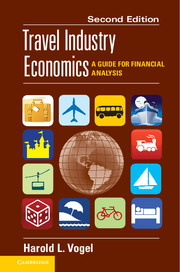Book contents
- Frontmatter
- Contents
- Preface
- Part I Introduction
- Part II Getting There
- Part III Being There
- Part IV Doing Things There
- Chapter 5 Casinos
- Chapter 6 Amusement/Theme Parks and Resorts
- Chapter 7 Tourism
- Part V Roundup
- Appendix A Sources of Information
- Appendix B Valuation Concepts
- Appendix C Major Games of Chance and Slots
- Glossary
- References
- Index
- References
Chapter 6 - Amusement/Theme Parks and Resorts
from Part IV - Doing Things There
- Frontmatter
- Contents
- Preface
- Part I Introduction
- Part II Getting There
- Part III Being There
- Part IV Doing Things There
- Chapter 5 Casinos
- Chapter 6 Amusement/Theme Parks and Resorts
- Chapter 7 Tourism
- Part V Roundup
- Appendix A Sources of Information
- Appendix B Valuation Concepts
- Appendix C Major Games of Chance and Slots
- Glossary
- References
- Index
- References
Summary
Mickey is the mouse that roared.
The American themed amusement park industry – begun in July 1955 by Mickey Mouse, the famous Disney character – has evolved into a multibillion-dollar travel and entertainment segment that draws visitors from around the world and has spawned many imitations. In this chapter, the economic outlines of amusement/theme park operations are sketched.
Gardens and Groves
The roots of this business extend back to medieval church-sponsored fairs and to seventeenth-century France, whose concept of pleasure gardens with fountains and flowers gradually spread throughout Europe. London's Vauxhall Gardens, for example, were established in 1661. By the eighteenth century, as Kyriazi (1976) has noted, entertainment and circus acts, including trapeze and tightrope scenes, ascension balloons, and music were added. In England, meanwhile, affiliations with nearby taverns or inns also became common.
It was not until the 1873 Vienna World’s Fair, held at the Prater, though, that mechanical rides and fun houses were introduced. As Mangels (1952, p. 4) describes it,
for more than three hundred years, elaborate outdoor amusement centers have existed in several European countries. Known usually as “pleasure gardens” they were remarkably similar to those of today in their general layout and variety of entertainment. Some of the larger parks provided events and devices which thrilled their visitors as keenly as present day attractions. Queens of the slack wire and daredevils of the flying rings brought gasps of fascinated terror, much as they do beneath the Big Top today. . . free balloon ascensions, and parachute jumps held crowds spellbound as far back as the seventeen-nineties.
- Type
- Chapter
- Information
- Travel Industry EconomicsA Guide for Financial Analysis, pp. 222 - 237Publisher: Cambridge University PressPrint publication year: 2012



